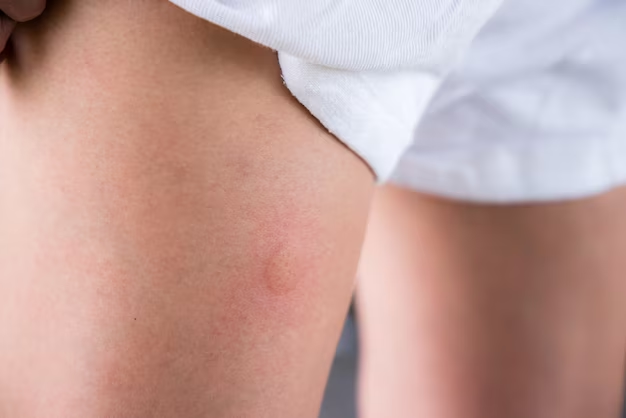Recognizing Shingles: What You Need to Know at the Start
Imagine you wake up one morning with an unusual tingling sensation on your skin. It's a peculiar feeling, one that you might dismiss initially as a temporary discomfort. As the hours pass, what was once a subtle annoyance intensifies into a more pronounced sensation, accompanied by a rash forming on your skin. This can be the start of shingles, a condition that can catch many off guard due to its often vague initial symptoms. Recognizing shingles early can make a significant difference in managing symptoms and improving comfort.
Understanding Shingles: The Basics
Shingles, medically known as herpes zoster, is a viral infection caused by the varicella-zoster virus—the same virus that causes chickenpox. Once a person has recovered from chickenpox, the virus remains dormant in the body and can reactivate later in life, manifesting as shingles.
Who is at Risk?
While anyone who has had chickenpox can develop shingles, certain factors increase the risk:
- Age: Individuals over 50 are more susceptible.
- Weakened Immune System: Conditions like HIV/AIDS or treatments such as chemotherapy can increase vulnerability.
- Stress: Significant stress can compromise the immune defense.
- Certain Medications: Long-term use of steroids or other immunosuppressants.
The Early Signs of Shingles
Identifying shingles early can aid in seeking timely medical advice, potentially alleviating the discomfort and complications associated with the condition. Here's what to watch for:
Initial Symptoms: What to Notice
1. Sensation and Tingling
- Before any rash develops, you might experience unusual sensations on your skin.
- These may include tingling, burning, or itching in a localized area.
2. Pain
- Often, the first major symptom is pain, which might be mild but can also be intense.
- The pain could be mistaken for other conditions, depending on its location.
Rash Development: Key Characteristics
1. Red Rash
- After a few days of initial symptoms, a red rash typically appears.
- This rash usually forms in a band or strip on one side of the body or face.
2. Blister Formation
- The rash then progresses into clusters of fluid-filled blisters.
3. Itching and Discomfort
- The affected area can be extremely itchy, adding to the discomfort.
Other Potential Early Symptoms
- Fever
- Headache
- Chills
- Upset Stomach
These flu-like symptoms can accompany the initial onset of shingles but aren't present in all cases.
Importance of Early Recognition
Identifying shingles early can lead to interventions that ease symptoms and prevent complications. Antiviral medications are most effective when started within 72 hours of rash appearance. Thus, recognizing the early signs is crucial for seeking prompt medical attention.
Differentiating Shingles from Other Conditions
Shingles can be confused with other skin conditions such as dermatitis, eczema, or herpes simplex. A few distinguishing factors can help clarify:
- Location: Shingles often affects only one side of the body.
- Pain Level: The intense pain before rash appearance is a hallmark.
- Age and History: Consider previous chickenpox history and age-related risks.
What Causes Shingles to Reactivate?
The storm that causes shingles to surface is tied to the reactivation of the dormant varicella-zoster virus in nerve tissues. Why this reactivation occurs isn't entirely understood but is believed to relate to weakened immune defenses.
Common Triggers
- Stress and Trauma
- Immunosuppressive Therapies
- Aging and Natural Decline in Immunity
Managing Discomfort and Lifestyle Adjustments
While this guide doesn't provide medical treatment advice, certain lifestyle adjustments can help manage symptoms:
Non-Medical Aids
1. Cool Compresses
- Applying cool compresses to the rash area can alleviate itch and burning sensations.
2. Loose Clothing
- Wearing loose clothing prevents irritation and allows the skin to heal comfortably.
3. Oatmeal Baths
- A soothing oatmeal bath might relieve the itching and discomfort.
Stress Management
1. Relaxation Techniques
- Practices such as yoga, meditation, or gentle exercises can reduce stress.
2. Adequate Rest
- Never underestimate the power of rest in promoting healing.
Myths and Misconceptions
Let's address and debunk some common misconceptions about shingles that can hinder understanding:
- "You Can’t Get Shingles if You’ve Never Had Chickenpox": This is true; shingles arises from dormant chickenpox virus in your body.
- "Shingles Isn’t Contagious": While not passed from person to person directly, a person with active shingles can spread varicella-zoster virus to someone who has never had chickenpox or received a chickenpox vaccine.
- "Only Elderly People Get Shingles": While it's more common in older adults, younger individuals can get it too, especially if their immune system is compromised.
Vaccination: A Preventive Measure
Today, vaccines are available to reduce the risk of shingles. The shingles vaccine is recommended for adults over 50 and significantly decreases the likelihood of developing the condition and its complications.
Types of Vaccines
- Zostavax: An older vaccine, less commonly used today.
- Shingrix: A newer, more effective vaccine recommended by health institutions.
Final Thoughts
Recognizing the early signs of shingles can empower you to seek timely advice and take steps to ease your discomfort. Knowledge about this condition is not only crucial for those who have had chickenpox but also for caregivers and loved ones of those at risk. By understanding what shingles looks like at the start and what action to take, you can be better prepared to manage this often painful experience.
📋 Key Takeaways
- Early Symptoms: Look for tingling, burning, and localized pain. 🩺
- Rash Identification: Rash may appear in a band, typically on one side of the body. 🌡️
- Timeliness Matters: Early recognition aids in seeking effective interventions. ⏰
- Vaccination Available: Vaccines can reduce the risk and severity of shingles. 💉
- Lifestyle Adjustments: Cool compresses, loose clothing, and stress management can help. 🛌
Recognize the signs, stay informed, and take action when needed! 🛡️
